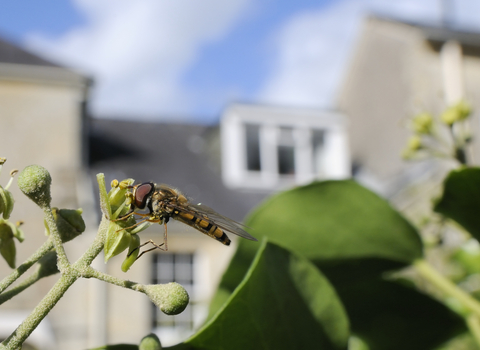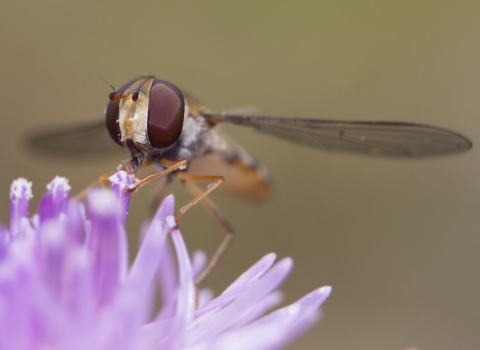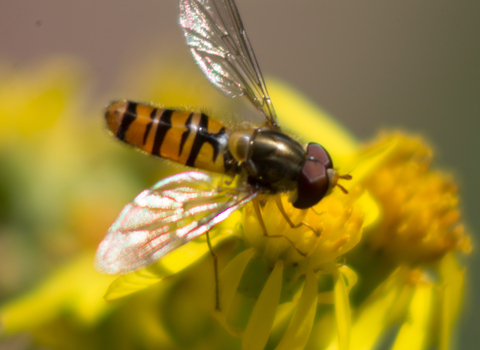
Marmalade hoverfly © Nick Upton/2020VISION

Marmalade hoverfly © Chris Lawrence

Marmalade Fly ©Sam Hockaday
Marmalade fly
Our most common hoverfly, the marmalade fly is orange with black bands across its body. It feeds on flowers like tansy, ragwort and cow parsley in gardens, hedgerows, parks and woodlands.
Scientific name
Episyrphus balteatusWhen to see
January to DecemberSpecies information
Category
Statistics
Length: 0.9-1.2cmCommon.
About
The marmalade fly is a very common hoverfly that can be seen in gardens, parks and sunny woodlands. Adults are on the wing right through the year, although appear in large numbers in the summer. They feed on nectar, gathering together on flowers like tansy, ragwort and cow parsley. The larvae are predators of aphids. As well as being a common breeding fly, in some years, huge numbers migrate here from the continent when they can be seen busily feeding on flowers near the coast.How to identify
The marmalade fly is our most common and familiar hoverfly, identified by its orange body with thick and thin black bands across it.Distribution
Widespread.In our area
We'd love to know if you've seen a marmalade hoverfly in Worcestershire. Please take a photo and let us know where and when you took it via our short wildlife sightings form. Thank you!
Did you know?
The marmalade fly gets its name from its orange colour, and the different sized black bands across its body: 'thin cut', 'thick cut', just like marmalade!We'd love to know if you've seen a marmalade hoverfly in Worcestershire. Please take a photo and let us know where and when you took it via our short wildlife sightings form. Thank you!
